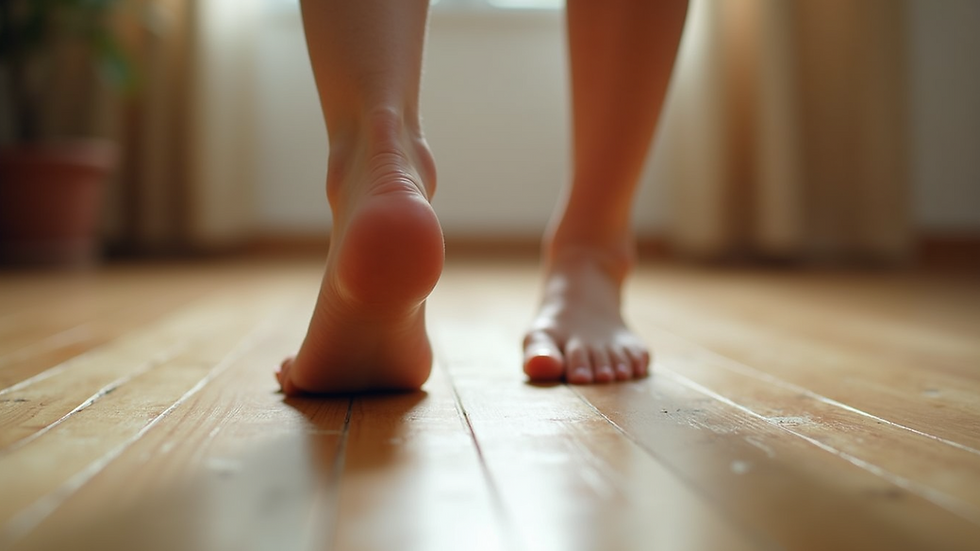Improving Your Physical and Mental Wellbeing Through Movement
- Zehra Erdogan
- Oct 2
- 4 min read
Movement is a natural part of life. Yet, many of us forget how powerful it can be for our health. When I started exploring mindful movement, I discovered how it gently supports both body and mind. It’s not about pushing hard or reaching extremes. Instead, it’s about tuning in, moving with awareness, and finding ease in everyday actions. This approach helps me feel more balanced, less stressed, and more connected to myself.
If you want to improve your overall health, including your physical and mental wellbeing, mindful movement offers a simple, effective path. Let me share what I’ve learned and how you can bring these benefits into your life.
Understanding Mindful Movement Benefits
Mindful movement means paying attention to how you move your body. It’s about being present in each step, stretch, or breath. This practice helps you notice tension, habits, and areas that need care. Over time, it can improve flexibility, strength, and coordination. But the benefits go beyond the physical.
When I move mindfully, I feel calmer and more focused. This happens because mindful movement encourages deep breathing and relaxation. It also helps reduce anxiety and lifts mood by releasing feel-good hormones. The gentle, intentional nature of this practice makes it accessible to everyone, regardless of age or fitness level.
Here are some key mindful movement benefits I’ve experienced:
Improved posture and alignment
Reduced muscle tension and pain
Enhanced body awareness and control
Better stress management and emotional balance
Increased energy and vitality
By incorporating mindful movement into your daily routine, you create a positive cycle. Your body feels better, your mind feels clearer, and you’re more motivated to keep moving.

How to Start Practising Mindful Movement
Starting mindful movement doesn’t require special equipment or a gym membership. You can begin right at home with simple steps. Here’s how I recommend getting started:
Choose a quiet space where you won’t be disturbed.
Wear comfortable clothes that allow free movement.
Begin with slow, gentle movements like neck rolls, shoulder shrugs, or ankle circles.
Focus on your breath as you move. Breathe deeply and evenly.
Notice sensations in your body without judgement. If something feels tight or sore, move gently around it.
Keep sessions short at first - even 5 to 10 minutes daily can make a difference.
Gradually increase time and variety as you feel more comfortable.
You might also explore guided mindful movement practices such as the Feldenkrais Method. This approach uses gentle, exploratory movements to improve function and ease. It’s especially helpful for those dealing with pain or limited mobility.
Remember, the goal is not to achieve perfection but to enjoy the process of moving with kindness and curiosity.

What is an example of physical wellbeing?
Physical wellbeing means your body functions well and feels comfortable. It includes strength, flexibility, balance, and the absence of pain or discomfort. An example of physical wellbeing is being able to move freely without stiffness or fatigue.
For me, this looks like waking up without aches, walking without limping, and having the energy to enjoy daily activities. It also means listening to my body’s signals and responding with care. When I practice mindful movement, I notice improvements in these areas.
Simple activities like stretching after sitting for a long time or taking a short walk can boost physical wellbeing. Over time, these small actions add up to better posture, less tension, and more resilience against injury.
If you want to deepen your practice, consider joining a class or workshop focused on mindful movement techniques. These can provide personalised guidance and support.

Practical Tips to Enhance Your Movement Practice
To make mindful movement a lasting habit, I find it helpful to create a supportive environment and routine. Here are some tips that work well:
Set a regular time each day for your practice, such as morning or evening.
Use reminders like phone alarms or sticky notes to stay consistent.
Keep your space inviting with natural light, fresh air, and minimal distractions.
Stay patient and compassionate with yourself, especially on tough days.
Track your progress by noting how you feel before and after sessions.
Explore online resources or local classes to learn new techniques and stay motivated.
I also recommend combining mindful movement with other wellness habits like hydration, balanced nutrition, and restful sleep. Together, these support your overall health and wellbeing.
Embracing Movement for Lasting Wellbeing
Movement is a powerful tool for nurturing your body and mind. By practising mindful movement, you invite more ease, comfort, and joy into your daily life. It’s a gentle way to build strength, reduce pain, and calm your thoughts.
If you want to explore this further, consider learning more about the Feldenkrais Method and other mindful movement approaches. They offer practical, effective ways to improve your physical and mental wellbeing and discover new freedom in how you move.
Remember, every small step counts. Start where you are, move with kindness, and enjoy the journey to greater wellness.
I hope this inspires you to embrace mindful movement and experience its many benefits. Your body and mind will thank you for it.
.png)



Comments